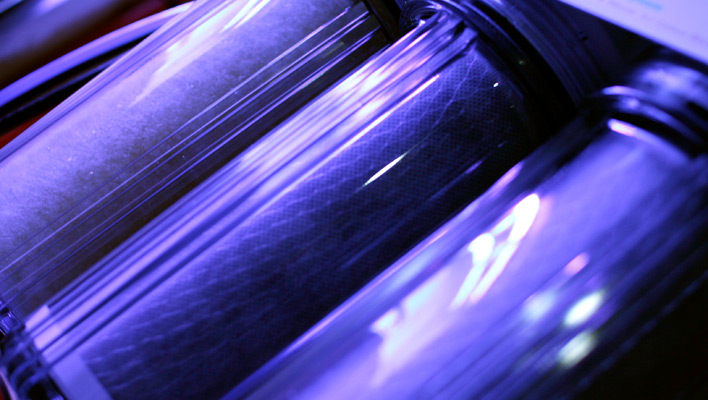When I was growing up, we were actually taught computer programming in school using punch cards that needed to be inserted into the computer. It was extremely rudimentary and slow, but it did teach me one valuable lesson: garbage in, garbage out. That is if you put in garbage programming you got out garbage answers.
The same is true for our reef tanks: if the water going into the tank for make-up water or for water changes is garbage then the water in the tank will be bad as well. You cannot improve the quality of your tank water beyond what you are adding, this is why you want the water you are adding to be as pure as possible. This is why it is recommended for everyone that a reverse osmosis/deionization purification system, RO/DI for short, be used on virtually every tank. Not only is this crucial in most situations for the long-term success of a tank, but it also allows us to determine why a problem might be occurring if we are all starting off from the same point of reference.
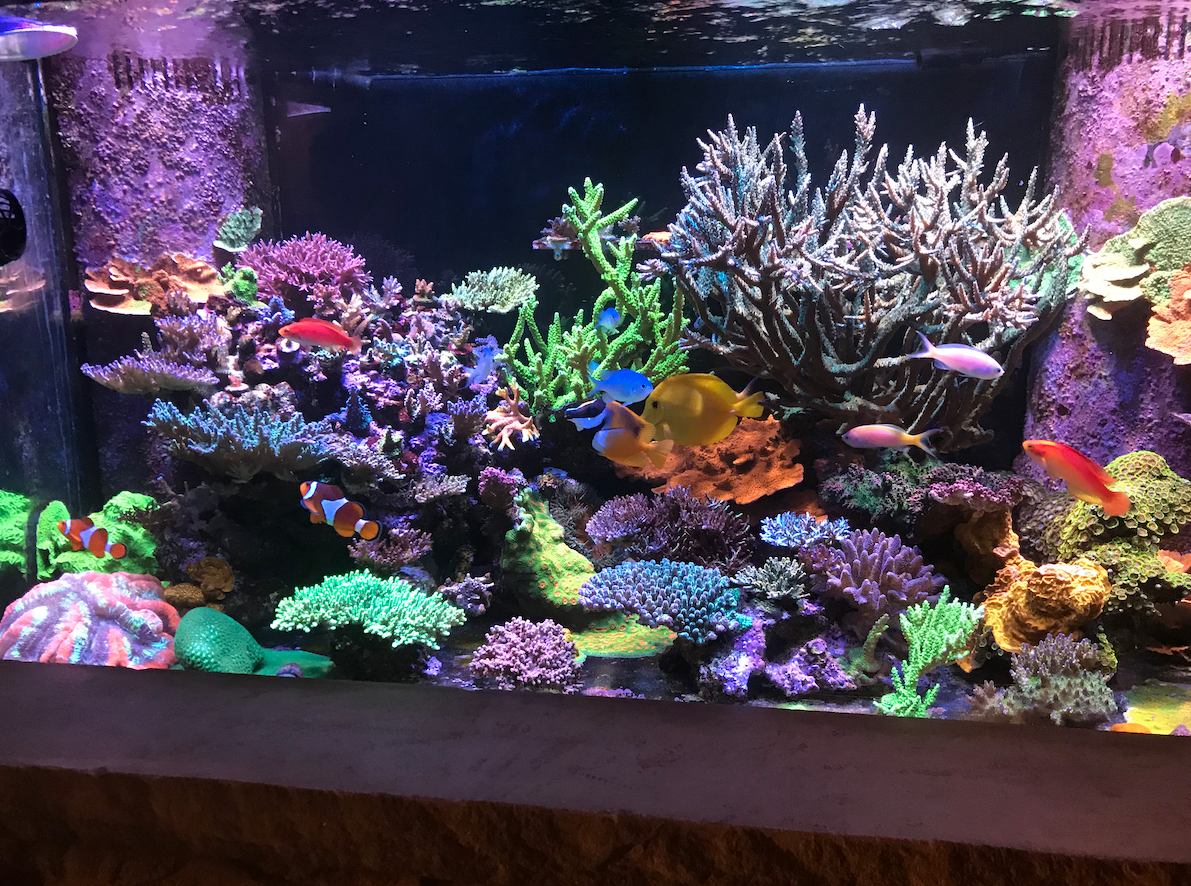
If you are just starting out or have a small tank you may opt for getting “pure” or RO/DI water from a shop. I have seen prices range from $.50 to $2.00 a gallon which might seem reasonable. But if you are going to have a tank for any length of time or will get a bigger tank it is advisable to get a RO/DI system for your home as it produces clean contaminant-free water for pennies per gallon. So over the long run despite the initial cost it will save you money.
So, what exactly is a RO/DI system, how does it work, and what is meant by stages? First, the stages are simply the number of sections of the system that the water will pass through with each one providing some form of filtration. There are four-stage, five-stage, seven-stage, and up systems, with each one providing more purification and with each step adding to the cost. Each stage removes something so that the stage after it is more efficient. So for a five-stage system, which is the system that is probably the most widely used and best for most applications each step removes something.
Stages of reverse osmosis
The first stage is a 1-3 micron sediment block filter that removes gross particulates and sediment from the water. The 1 to 3-micron size refers to the size of the pores on the filter with a smaller number indicating that it will only allow molecules smaller in size to pass through. While using a smaller size filter might seem good at first, the smaller sizer filters typically become blocked more quickly so the 3-micron size might be a better choice.
At first glance, it might seem like this type of filter might be unnecessary as most of our tap water looks very clear. However, once you have one of these filters in place you will quickly see how much sediment is actually in our drinking water. Initially, I would only change this filter quarterly, but I quickly realized how dirty the tap water is so now it is changed the first of every month.
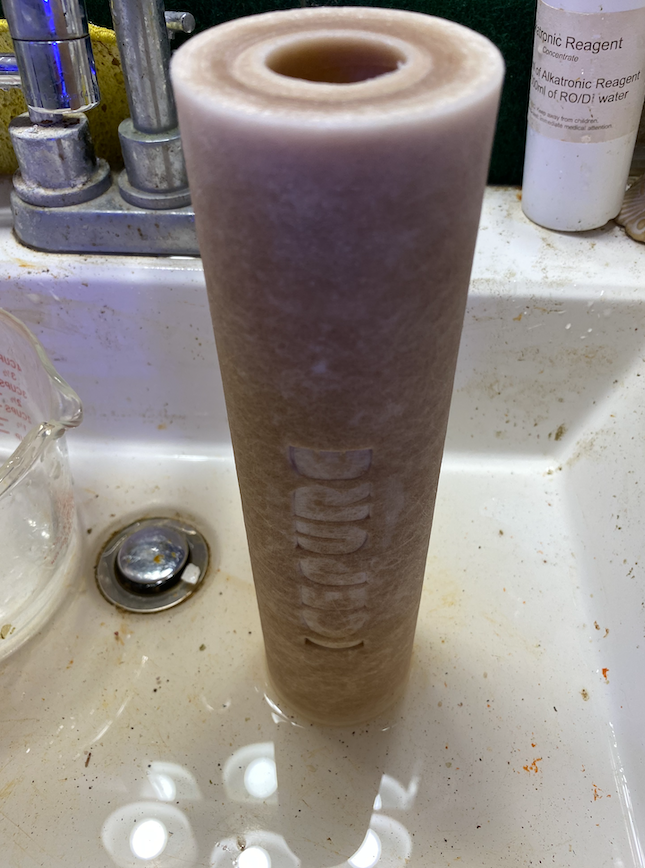
Immediately after this stage are the carbon block filters. In a four-stage system there is only one of these, while in a five-stage and above there are two. Due to its amazingly large surface area activated carbon removes any suspended solids that have passed the sediment filter along with volatile organic compounds, heavy metals, and some chlorine and chloramines.
Does reverse osmosis remove Chloramines?
To me, there is some debate as to whether these carbon blocks do or don’t remove chlorine and chloramines as some manufacturers claim they do while others say they do not. I tend to err on the do-not side and take precautions which will be discussed below as chloramines are simply too toxic to assume they are removed. Good activated carbon will remove a significant amount of contaminants before the water reaches the Reverse osmosis stage so it needs to be changed regularly. Like the sediment filter, these carbon blocks become exhausted relatively quickly so in my system they are changed monthly when the sediment block is changed.
Most carbon has a significant amount of dust in the container and while this dust is very effective at removing contaminants, it also will clog the RO membrane if it is not rinsed away when the carbon is changed. For this reason, all carbon going into the carbon filters is rinsed with RO/DI, NOT TAPWATER, before it is placed in the filter. This rinse removes the dust and keeps it from plugging up any of the other stages downline.
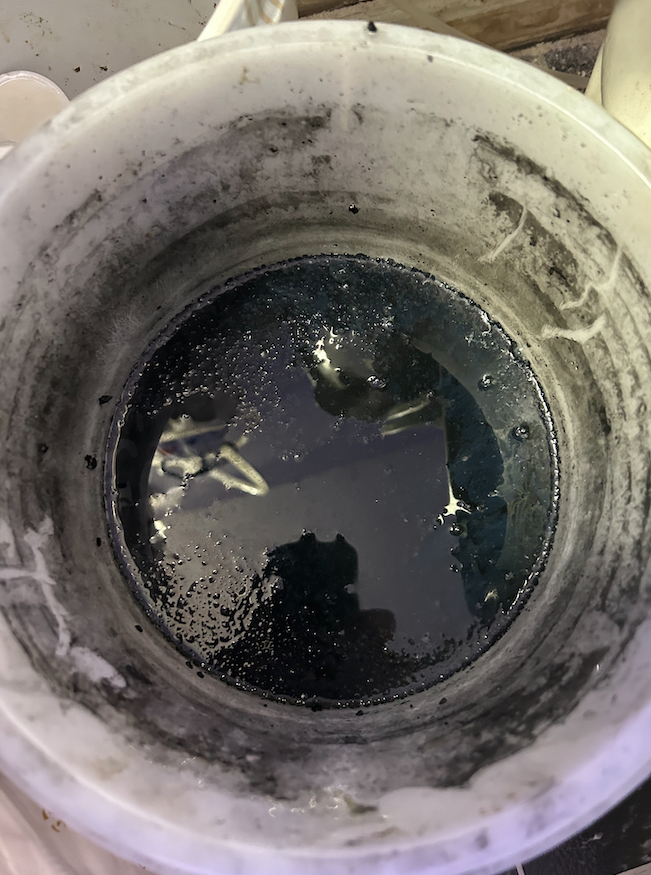
Reverse osmosis membranes
After these two stages come the workhouse sections of this filtration section. After the carbon filters comes the Reverse osmosis stage. In this stage, water is forced under pressure through a fine membrane that only allows the smallest molecules attached to water to pass through it. Larger molecules are repelled and these are washed away via wastewater that comes out of the system. Reverse osmosis will remove common chemical contaminants including metal ions and aqueous salts including sodium, chloride, copper, chromium, and lead, and may help to reduce levels of arsenic, sulfate, fluoride, calcium, potassium, nitrate, magnesium, and phosphorous. It does not however effectively remove most organic compounds, bacteria, viruses, microorganisms, carbon dioxide, or chlorine by-products.
It should be noted that none of these compounds is removed 100% and the effectiveness of removal ranges from 85-98%. RO works best when the water injected into it is under pressure with 60psi being optimal. At 40PSI or lower it is recommended that a booster pump be used otherwise a significant amount of wastewater will be produced and the membrane can even be colonized by bacteria and fouled. Most units come supplied with a pressure gauge so the water pressure going in can be readily determined. Some higher-stage RO/DI units are now adding a second RO stage to further increase the effectiveness of the filtration, but in most systems this is unnecessary.
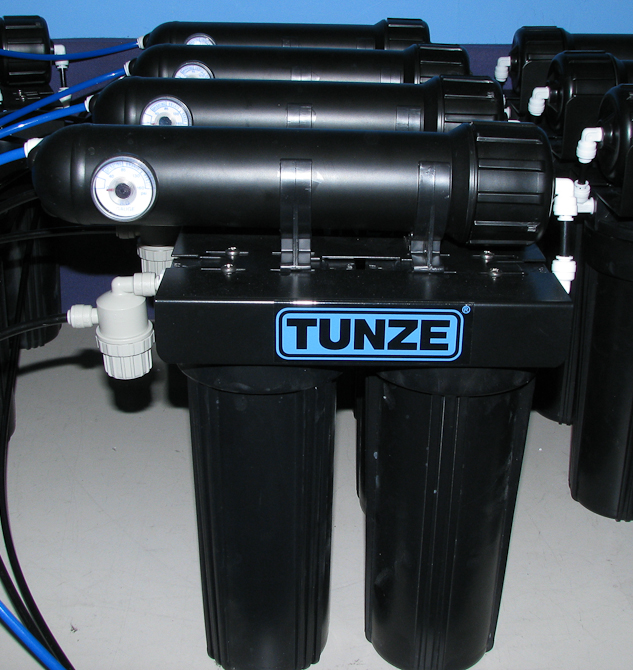
What does Deionization do?
After this stage come the last stages of purification and this stage, the DI section, is designed to remove any compounds that are ionic in nature that the other stages missed. This stage can contain only one deionization section or as many as are desired as with most units it is possible to add more of these stages relatively easily. In the five-stage units, there are two of these sections. The filtration media in these stages are designed to remove two types of ions: positively charged ions “cations” and negatively charged ions “anions”.
The filtration material looks like beads and is available in a variety of ways. It can be separate chambers of each, mixed beds, and mixed or separate of color changing beads which show when it is exhausted. The cations that can be removed include minerals such as calcium, magnesium, iron, and sodium. The anions that can be removed include sulfates, chloride, nitrate, carbonates, and silica. Again, it should be noted that these items can only be removed when they are in an ionic state. If compounds or elements are neutral, and lacking a charge, they will not be effectively removed. Deionization will not remove solids, viruses, or bacteria.
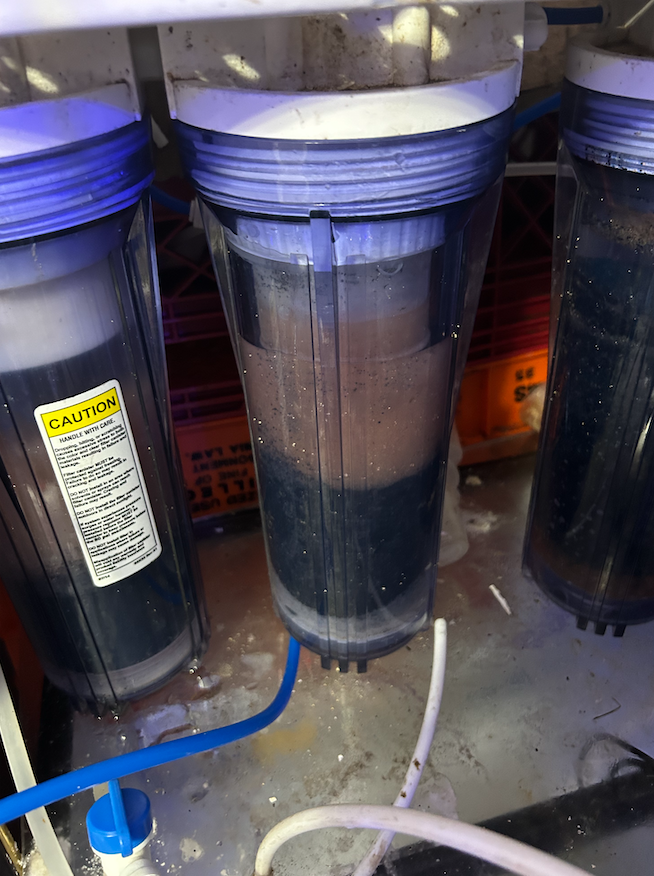
In some instances, there may be an excess of a compound or element in the water going through the RO/DI unit such as silicone, iron, or chloramines. In this instance, the high levels of these substances can overwhelm the unit resulting in these substances getting into the tank. This can result in a diatom bloom in the case of silicone or tank die-off in the case of chloramines. If these are suspected, it is possible to get cartridges specifically designed to remove these substances.
Municipal water authorities have also added other substances that are toxic to reef life and in areas with heavy agricultural activity pesticides, herbicides, and fertilizers have also been found in higher levels in some tap water and this can also lead to issues in a reef tank. An adequate-sized RO/DI unit can handle most of these situations, but when they are present they can exhaust the DI resin more quickly than normal or cause issues with the RO membrane. All of this leads to the question of how often you need to change the RO membrane and the DI resin.
TDS meters
If a color-changing DI resin is used, obviously it is when the resin’s color has changed to indicate that it is exhausted. But if that is not being used there used to be some guesswork involved. I have tried to reduce this by using a total dissolved solids, (TDS,) meter to determine when the unit is no longer functioning optimally. This inexpensive device shows the level of dissolved solids in the water going in and coming out of the RO/DI unit. When working properly the water coming out should be close to 0. Even when I am using color-changing resin I still use the TDS meter for guidance and once the unit shows a level greater than 10 I change out the resin. When I am changing out the resin I use the meter to assess how well the RO membrane is working by measuring the water before it gets into the DI stage. When it is in the 15-20 range then the RO membrane is changed as well.
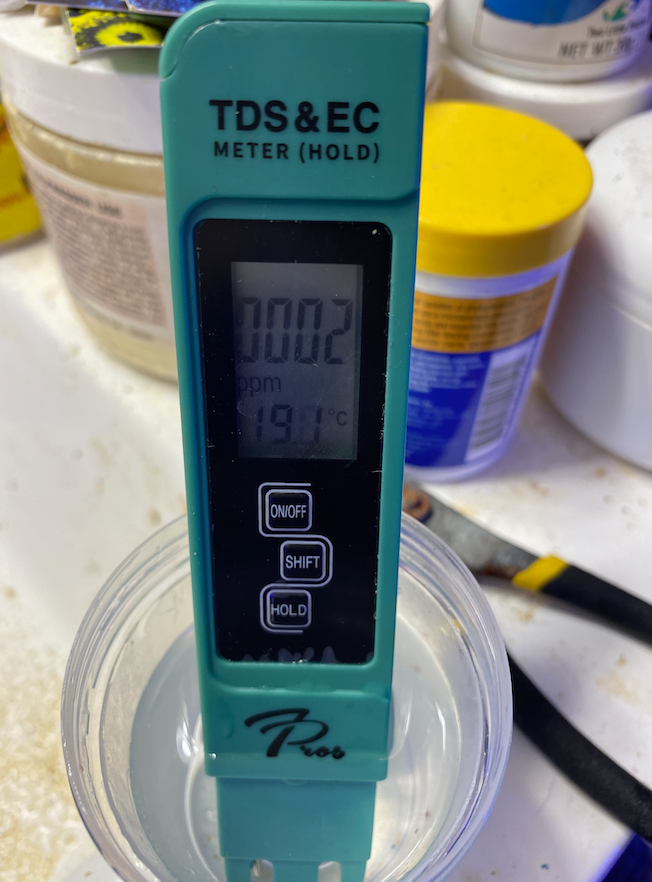
Lastly, despite how good these systems are I have that at times they are either inadequate or overwhelmed at removing chlorine or chloramines. To assess if this is the case top-off and water change water is tested weekly with a pool chlorine test strip. If any level of chlorine measures on the strip, then something in the unit needs to be changed out. In addition, when this occurs all water is treated with Prime or another chloramine remover until it is confirmed that the water is chlorine/chloramine free.
Starting off with pure water is essential to long-term success with reef tanks. Sadly, over the past few years, I know of at least half of a dozen successful reefers lose entire tanks due to their tap water coming in with deleterious chemicals which overwhelmed their RO/DI units. For this reason, it is critical that these systems be maintained properly and the water they produce be tested regularly.


